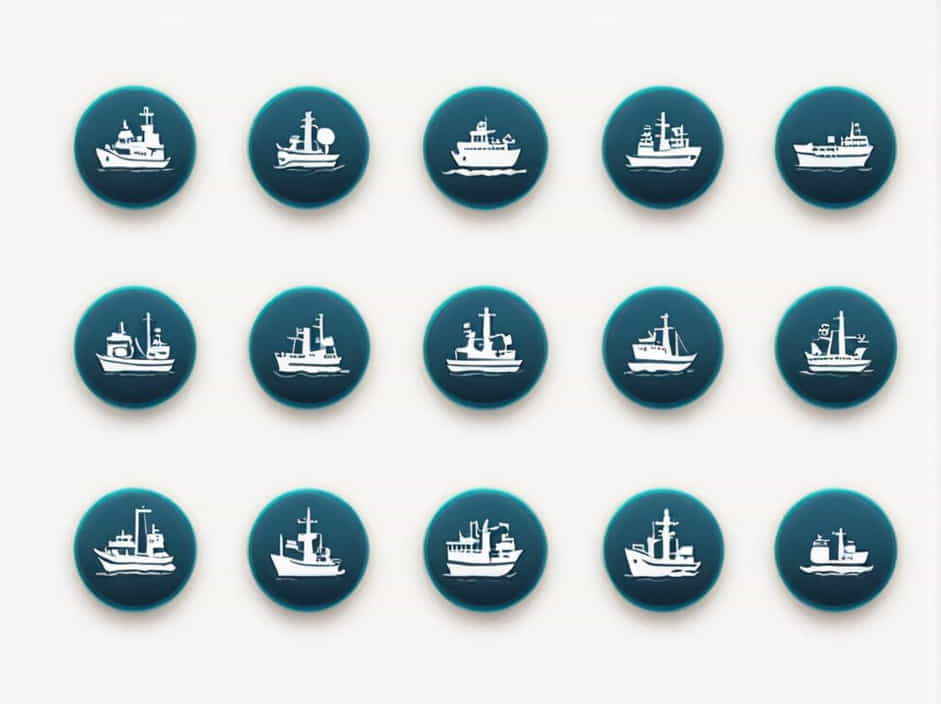A flotilla is a group of ships that operate together as a single unit. The term is commonly used in naval operations, recreational boating, and commercial fleets. Flotillas can range from small private boats traveling together to large military formations used in warfare and strategic defense.
In this topic, we will explore the definition, purpose, types, history, and significance of flotillas in both military and civilian contexts.
Definition of a Flotilla
A flotilla is a formation of multiple ships sailing together under a unified command or purpose. It typically consists of similar types of vessels, such as naval warships, fishing boats, or leisure yachts.
Key Characteristics of a Flotilla
-
Group Formation: Ships travel together for a common goal.
-
Unified Command: One leader or coordinating authority directs the flotilla.
-
Specific Purpose: Used for military, trade, exploration, or recreation.
The Purpose of a Flotilla
Flotillas serve various functions, depending on their type and use.
1. Military Operations
In naval warfare, flotillas are strategic units used for patrolling, attacking, or defending territories. These formations allow for better coordination, communication, and efficiency in battle.
2. Commercial and Trade Missions
Merchant and fishing fleets form flotillas for safety and logistical support. Sailing in groups provides protection against piracy, harsh weather, and technical failures.
3. Recreational and Tourism Activities
Yachting flotillas are popular among boaters, tourists, and sailing clubs. A group of boats sailing together enhances safety, navigation, and social experiences.
4. Humanitarian and Rescue Missions
Flotillas are deployed during disaster relief efforts to deliver supplies, transport people, and conduct search and rescue operations.
Types of Flotillas
Different types of flotillas exist based on function, size, and organization.
1. Naval Flotillas
-
Composed of warships, submarines, or patrol boats.
-
Used for combat, surveillance, and escort missions.
-
Typically led by a fleet commander or admiral.
2. Merchant Flotillas
-
Includes cargo ships, tankers, and fishing vessels.
-
Travels together for trade, fishing, or supply distribution.
-
Offers protection against maritime threats.
3. Recreational Flotillas
-
Formed by private yachts, sailboats, or cruise ships.
-
Used for social sailing, group adventures, or regattas.
-
Often guided by an experienced captain or tour leader.
4. Humanitarian Flotillas
-
Consists of medical, relief, and transport vessels.
-
Deployed for disaster response, refugee aid, or emergency evacuations.
-
Operates under international organizations or NGOs.
5. Political or Protest Flotillas
-
Organized for activism, awareness campaigns, or demonstrations.
-
Used by environmentalists, political groups, or social movements.
-
Notable example: The Gaza Freedom Flotilla (2010).
The History of Flotillas
Flotillas have played a major role in maritime history, from ancient naval battles to modern-day commerce.
1. Ancient Naval Flotillas
-
The Greek and Roman navies used flotillas for warfare.
-
Viking raiders traveled in flotillas for expansion and conquest.
2. Age of Exploration (15th-18th Century)
-
European explorers, such as Christopher Columbus and Vasco da Gama, traveled in flotillas for navigation and protection.
-
Merchant fleets established trade routes and colonial expansions.
3. World Wars and Military Flotillas
-
Flotillas played a major role in WWI and WWII, including convoy systems and amphibious assaults.
-
Submarine flotillas were key in naval blockades and underwater warfare.
4. Modern-Day Use
-
Military navies continue to use flotillas for patrols, defense, and peacekeeping.
-
Recreational and commercial flotillas have expanded with advanced navigation technology.
Flotilla vs. Fleet: What’s the Difference?
Many people confuse flotillas and fleets, but they have distinct differences.
| Feature | Flotilla | Fleet |
|---|---|---|
| Size | Smaller unit, often part of a fleet | Large group of ships |
| Command | Led by a flotilla commander | Led by a fleet admiral |
| Function | Specific mission or purpose | Broad operational scope |
| Examples | Patrol boat flotilla, fishing flotilla | Navy fleet, cargo fleet |
How Flotillas Operate
Flotillas require organization and coordination to function effectively.
1. Leadership and Communication
-
A flotilla leader directs movements and strategies.
-
Ships maintain radio contact for navigation and safety.
2. Navigation and Formation
-
Ships follow a pre-determined route and speed.
-
Formation depends on weather, threats, and mission objectives.
3. Safety Measures
-
Regular emergency drills are conducted.
-
Ships carry backup supplies and fuel reserves.
Famous Flotillas in History
Several flotillas have made a significant impact on maritime history.
1. The Spanish Armada (1588)
A massive flotilla sent by Spain to invade England, ultimately defeated due to superior English naval tactics and weather conditions.
2. The German U-Boat Flotillas (WWII)
Nazi Germany’s submarine flotillas were used for stealth attacks against Allied convoys in the Atlantic.
3. The Dunkirk Evacuation (1940)
A flotilla of civilian boats and naval vessels helped rescue over 300,000 Allied soldiers trapped in France during WWII.
4. The Gaza Freedom Flotilla (2010)
A political flotilla attempting to break the blockade on Gaza, leading to an international crisis.
Modern-Day Flotillas and Their Significance
Flotillas remain relevant today in military, trade, and leisure activities.
1. Naval Security and Defense
-
Countries maintain flotillas for patrolling waters and deterring threats.
-
Coast guards operate flotillas for border control and anti-piracy missions.
2. International Trade and Commerce
-
Merchant flotillas transport essential goods, oil, and resources.
-
Trade flotillas support global economic activity.
3. Environmental and Research Missions
-
Scientific flotillas study marine ecosystems and climate change.
-
Environmental groups use flotillas to protect oceans and wildlife.
A flotilla of ships is a coordinated group of vessels operating together for military, commercial, recreational, or humanitarian purposes. Throughout history, flotillas have played a crucial role in warfare, exploration, and global trade.
From naval warships to luxury yachts, flotillas remain an essential part of maritime operations, ensuring safety, efficiency, and strategic advantage at sea.
